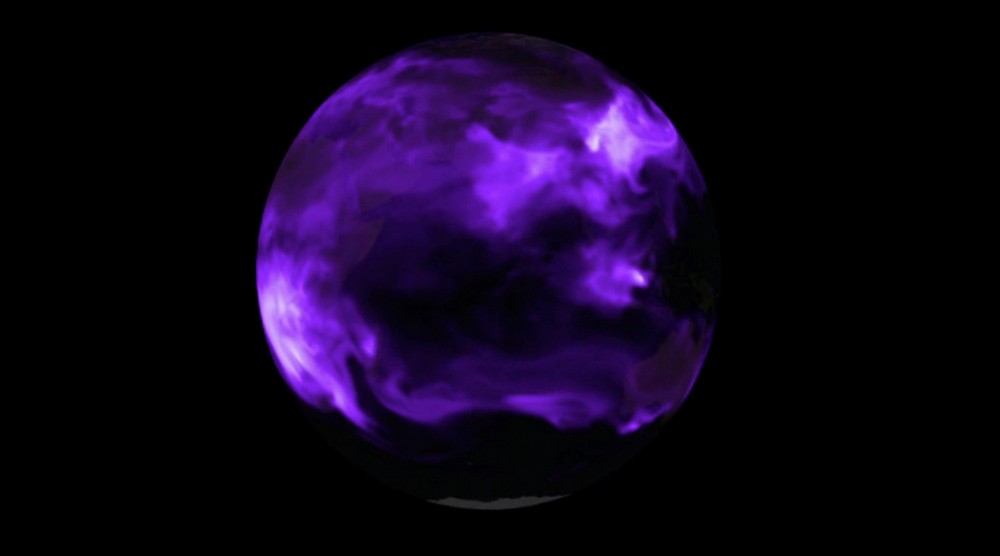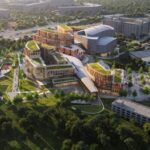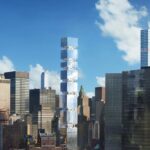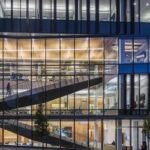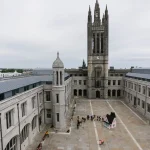Temple Hoyne Buell Center Columbia University, New York Building, Architect, Images
Temple Hoyne Buell Center for the Study of American Architecture
“Power” Research Inititative, Graduate School of Architecture, Planning & Preservation, Manhattan, NYC, USA
October 11, 2016
Temple Hoyne Buell Center for the Study of American Architecture, Columbia University
“Power” research inititative at the Temple Hoyne Buell Center for the Study of American Architecture, Columbia University
“Power”
A research initiative
Image from Air Drifts, “Black Carbon: Atmospheric Model”:
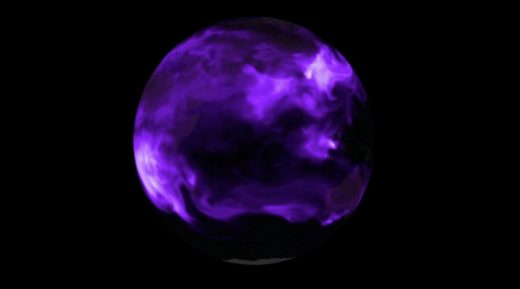
photo courtesy NASA-GMAO
Spanning the planet, the dynamics of climate change bind together innumerable, often incompatible categories, things, and processes. Among these are energy infrastructures, politics, nature, biological and social life, and the built and unbuilt environment. The struggles and contradictions they entail, and the powers they sustain, impose limits on our capacity to grasp their connections and to conceive alternatives.
With these limits in mind, the Buell Center’s new, long-term research project, “Power,” extends the Center’s recent work on housing, inequality, and real estate (more information here) into another dimension of the planetary commons. Where the earlier research began with an analysis of land ownership and its relation to housing and the public sphere, “Power” begins with the air circulating above that land, the energy coursing through it, and the earth below it, all in relation to the lives lived within it.
In the fall of 2016, the Center will host two discussions around projects whose areas of research speak directly to these concerns. On October 13, we will celebrate the publication of Outlaw Territories: Environments of Insecurity / Architectures of Counterinsurgency by Felicity Scott (Zone Books, 2016) in Ware Lounge at Columbia University’s Graduate School of Architecture, Planning, and Preservation (GSAPP). This event will feature remarks by the author and a response by Brian Larkin, followed by discussion.
Then, on November 29 in GSAPP’s Wood Auditorium, the Buell Center presents Air Drifts, a research and video project by Kadambari Baxi, Janette Kim, Meg McLagan, David Schiminovich, and Mark Wasiuta, in collaboration with NASA-GMAO (Global Modeling and Assimilation Office).
In the coming months, the Buell Center will continue working with scholars, architects, artists, and other thinkers and practitioners of the built environment who share an interest in the intellectual and material challenges posed by climate change, as we continue to develop specific lines of research and programming. More information can be found at buellcenter.org, @buellcenter on Twitter, and arch.columbia.edu.
The Temple Hoyne Buell Center for the Study of American Architecture
Columbia University in the City of New York | Graduate School of Architecture, Planning & Preservation
1172 Amsterdam Avenue, 300E Buell Hall
New York, NY 10027
USA
buellcenter@columbia.edu
Temple Hoyne Buell Center for the Study of American Architecture
Temple Hoyne Buell Center for the Study of American Architecture twitter
Location: 1172 Amsterdam Avenue, New York City, USA
New York City Architecture
Contemporary New York Buildings
Manhattan Architecture Designs – chronological list
New York City Architecture Tours by e-architect
Columbia University Campus
Design: Renzo Piano Building Workshop (RPBW)
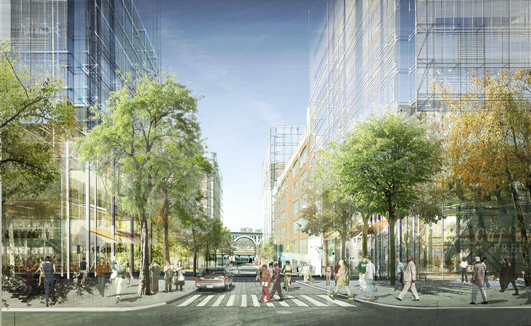
picture published by permission of Columbia University
Columbia University Campus
Columbia University Medical Center Building
Design: Diller Scofidio + Renfro with Gensler
Columbia University Medical Center
Northwest Corner Building, Columbia University, NYC
Design: José Rafael Moneo architect
Columbia University Northwest Corner Building
Campbell Sports Center Columbia
Columbia University Campus architect : Renzo Piano
Columbia University Campus architects : Skidmore, Owings & Merrill
Campbell Sports Center Building
Museum of Contemporary Art New York – Extension
Comments / photos for the Temple Hoyne Buell Center for the Study of American Architecture at Columbia University New York Architecture page welcome

